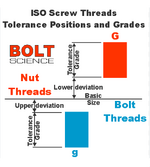Bronze Supporter
- Messages
- 5,268
- Reactions
- 13,641
If my dies are 14 threads to the inch then 1/4 turn is .0178 inches of movement, correct? My thought that I've done in the past is to start at whatever fits in the magazine and see if it chambers then push the bullet into contact with the lands and then turn the die down the 1/4 from there. Now that I've shot my benchmark load I'm wanting to make the load correct for this rifle with this bullet so feel that getting the OAL right is the next step before changing powders and charges. This is for my Savage 25-06 with the Lehigh 102gr Controled Chaos bullets. My Benchmark load was a mid-range powder charge seated to the factory OAL and shot a 3/4" group.















